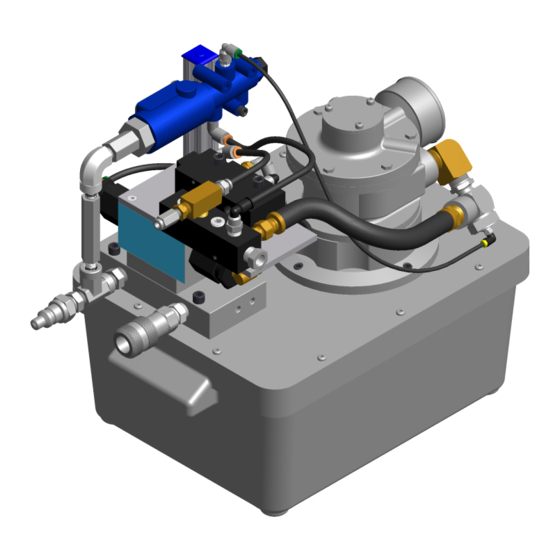Gage Bilt GB910 Snelstarthandleiding - Pagina 5
Blader online of download pdf Snelstarthandleiding voor {categorie_naam} Gage Bilt GB910. Gage Bilt GB910 13 pagina's. Hydraulic powerunit

The unit should be connected to an air source, and actuated with the air trigger on the tool. Operate
Powerunit at 90-120 psi air pressure with a minimum hose ID of 1/2". This will start the motor and it will run
until the return line pressure switch is satisfied, which will then shut the motor off. Now you are ready to
install rivets. Load rivet and collar and place in work piece. The circuit is activated by pulling on gun
trigger. It puts power to the motor and the unit builds pressure to install the rivet. When the trigger is
released the motor will continue to run until line pressure is satisfied, which then shuts the motor off until
next cycle.
CAUTION:
ENSURE POWERUNIT DOES NOT EXCEED RECOMMENDED INSTALLATION TOOL PRESSURES.
PREPARATION
To avoid poor performance and down time, keep foreign material from getting into the hydraulic system.
Observe the following points:
1. Check tool manual for recommended pressures.
2. Wipe off couplers before connecting them.
3. Do not let hose fittings or couplers lie on the ground or dirty floor.
4. Clean area around filler cap before filling the reservoir with hydraulic fluid.
5. Use a clean funnel with filter.
6. Drain and clean reservoir and fill with clean fluid on a regular basis.
Before the GB910 Powerunit is used:
1. Check hydraulic fluid level in reservoir and if necessary add fluid.
2. Inspect hoses for damage or wear and if necessary replace.
3. Check the entire GB910 Powerunit for leaks and if necessary repair.
4. Operate Powerunit at 90-120 psi air pressure with a minimum hose ID of 1/2
WARNING:
MAKE SURE AIR IS DISCONNECTED BEFORE SERVICING ANY COMPONENTS.
Scheduled inspections to detect and correct minor problems are part of an effective preventive
maintenance program.
1. Inspect hydraulic fittings to make sure they are secure.
2. Inspect hoses for signs of damage. Replace hoses if necessary.
3. Inspect during operation to detect any leakage, abnormal heating or vibration.
4. Inspect hydraulic fluid on a regular basis. Clean reservoir and replace fluid if contamination is detected.
5. Keep exterior surfaces clean.
OPERATION
:
REGULAR USE:
MAINTENANCE:
5
NOTE! Unit is shipped without oil.
REV. 10/13
